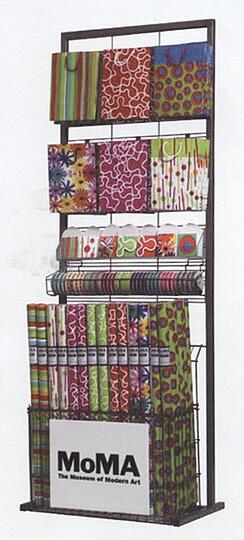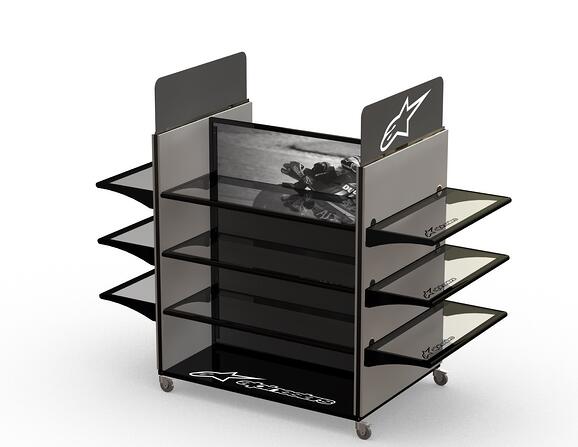10 Things You Need to Know to Before Starting the Design Process
Part II
This blog series is about the importance of understanding the rules of retail and overall program economics prior to starting the point of purchase design process. In the first of this two-part series, we highlighted the first 5 important things brands should know as part of the merchandising program planning process. These include understanding: (1) where your display will be placed in the store, (2) where and how decisions are made within specific retailer organizations, (3) how shipping of your product and your displays will work, (4) what other program costs need to be considered, and (5) what are your sales and profit margin projections. Check out Part I of this series here. In today’s blog, we’ll look at the other 5 things you should know before investing in the POP design process:
1) Display Program Longevity – Before knowing how much you should invest in a POP display program, it is important to know how much time the retailer is willing to commit to having your display in the store. Can you get the retailer to commit to 2 years as long as sales meet some agreed-upon objectives? How about 3 years? If you can get a 2-year commitment, for example, you can amortize the cost of the display over 24 months of sales, presuming that the display is well built and can last for 2 years.
If the retailer isn’t willing to commit to a specific timeframe and you are unsure of how your product will sell, it makes it more difficult to invest a lot in the display. In those circumstances it makes sense to create a financial model where the display pays for itself within a short period of time. If you are trying to sell the retailer on an in-and-out merchandising program using a corrugated display, then generally you can amortize the cost of the display over the amount of product the display holds since corrugated displays are typically discarded after they sell out, and rarely are they refilled.
2) Physical Space Requirements – It is imperative that you understand the visual merchandising rules and requirements on a retailer-by-retailer basis. Retailers often have guidelines for the footprint allowed for your freestanding floor display. Many retailers don’t allow hooks to extend into the aisle area. Line of sight is also a big issue with many retailers so make sure you understand how high you can go with your display. Find out if they want your display to have wheels so it can be moved to various locations within the store or just moved for cleaning purposes.
Although it is really not a physical requirement, it is advisable that you get approval from the category manager or visual merchandising team on the graphics you plan to use. One of our recent customers asked us to print the graphics before getting Brookstone to approve. Brookstone had an issue with the wording on their graphics so we had to reprint the graphics, which ended up being costly for our customer.
3) Display Assembly Arrangements – As we mentioned in our last blog, shipping can represent a major cost component of any merchandising program. Therefore, it frequently makes sense to send POP displays to retailers unassembled (i.e., knock-down). We typically included assembly instructions and tools with the knock-down displays, but this arrangement only makes sense if the retailer commits to having their store personnel assemble the units. The majority of retailers are willing to do this provided the assembly doesn’t take more than 15-20 minutes. But don’t assume that every retailer will assemble your displays. It’s best to get a clear commitment up front.
If a retailer is unwilling to commit to assembling your displays, then you will need to evaluate the cost of sending the display assembled vs. using your own team or a third-party company to set up the display. Be sure to analyze the full range of assembly and/or installation costs that you might incur to set up your display in stores.
4) Competitive Products – Before embarking on the point of purchase design process, make sure you understand what competitive products are in the retailers you are targeting. It’s valuable to know which products you will be up against, how they display their products, what their price points are in relation to your price, the extent to which they are advertising and promoting their products, and specifically where their products are located within the store. This type of information will help you figure out how to be different/better and how you may need to tweak your unique selling proposition.
Armed with this information, you may want to consider working with the retailer to find other space that makes sense within the store so you aren’t going head-to-head with your competition. A successful example of this strategy is Ouhlala Gourmet. Rather than trying to compete in-line with big brands who have big promotional budgets, the company worked with us to design a wood dump bin display for the produce department that completely changed the game for their Buddy Fruits product.
5) Servicing Approach – Understanding how your displays will be serviced is an important consideration for the POP design process. Wil your sales reps be servicing your displays? Do you plan to hire outside service reps? Will you be relying on retail store personnel to refill your display? Is the restocking process intuitive or are there special instructions required? How do you plan to keep the brochures you want on your display in stock? How are you going to handle keeping your display clean, particularly with the dust that will inevitably accumulate on the black base you envision? It is important to think through all of these types of operational and servicing issues and the associated costs of each scenario. Keeping your display full, clean and looking good is often an ongoing challenge but can be very important to your brand image.

Jim Hollen is the owner and President of RICH LTD. (www.richltd.com), a 35+ year-old California-based point-of-purchase display, retail store fixture, and merchandising solutions firm which has been named among the Top 50 U.S. POP display companies for 9 consecutive years. A former management consultant with McKinsey & Co. and graduate of Stanford Business School, Jim Hollen has served more than 3000 brands and retailers over more than 20 years and has authored nearly 500 blogs and e-Books on a wide range of topics related to POP displays, store fixtures, and retail merchandising.
Jim has been to China more than 50 times and has worked directly with more than 30 factories in Asia across a broad range of material categories, including metal, wood, acrylic, injection molded and vacuum formed plastic, corrugated, glass, LED lighting, digital media player, and more. Jim Hollen also oversees RICH LTD.’s domestic manufacturing operation and has experience manufacturing, sourcing, and importing from numerous Asian countries as well as Vietnam and Mexico.
His experience working with brands and retailers spans more than 25 industries such as food and beverage, apparel, consumer electronics, cosmetics/beauty, sporting goods, automotive, pet, gifts and souvenirs, toys, wine and spirits, home improvement, jewelry, eyewear, footwear, consumer products, mass market retail, specialty retail, convenience stores, and numerous other product/retailer categories.





